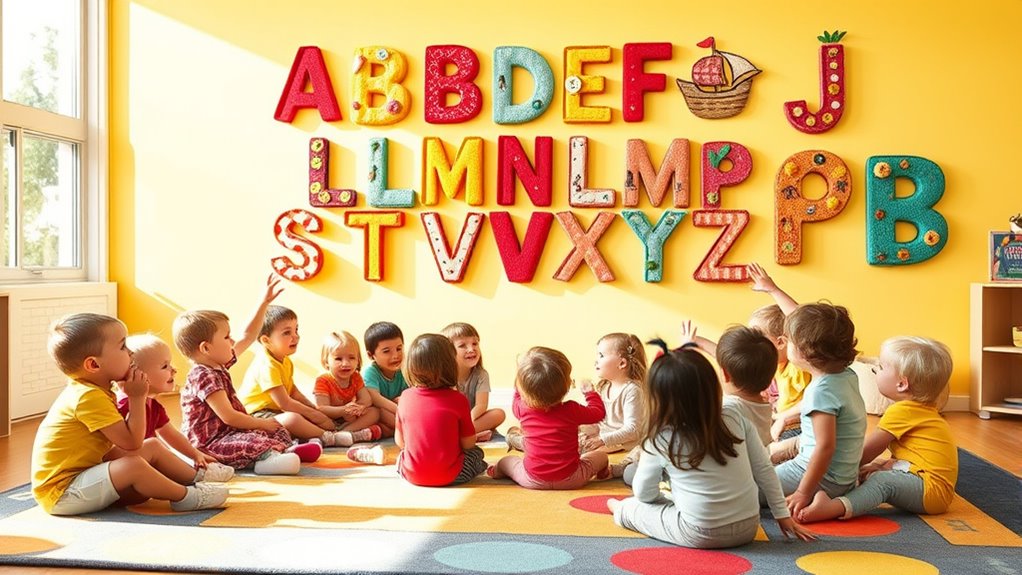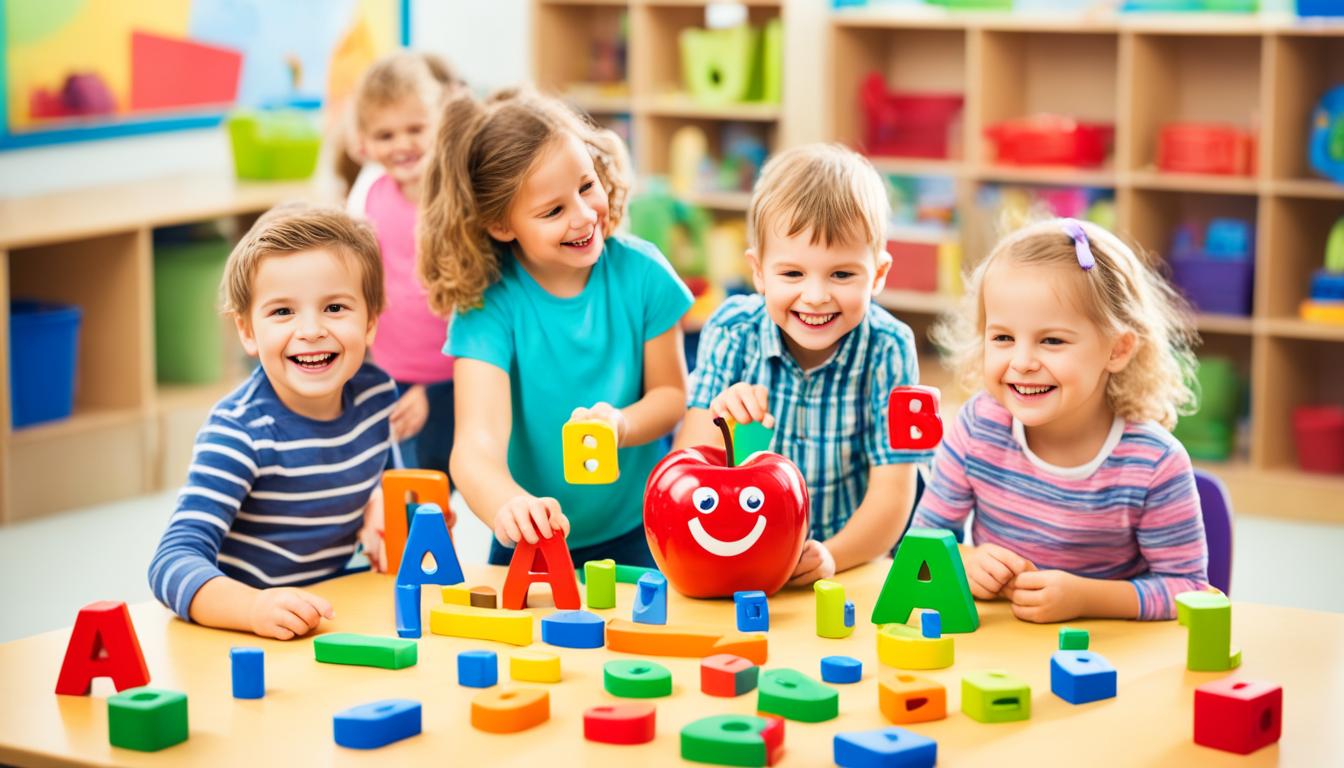To teach letter recognition the playful way, incorporate fun activities like matching games, where kids pair uppercase with lowercase or find hidden letters, and hands-on activities like tracing in sand or drawing. Use multisensory experiences—visual, auditory, tactile—to make learning engaging and memorable. Regularly integrate these games and handwriting practice into routines to keep children excited and motivated. Keep exploring to discover even more effective ways to turn learning into a joyful adventure.
Key Takeaways
- Incorporate alphabet matching and hidden letter games to make recognition engaging and fun.
- Use multisensory activities like drawing, tracing, and tactile play to reinforce letter shapes.
- Integrate letter activities into daily routines for consistent, pressure-free learning.
- Combine playful handwriting exercises with visual and auditory cues to enhance retention.
- Celebrate small successes to boost motivation and foster a positive attitude toward learning letters.

Have you ever wondered how children learn to identify and differentiate the letters of the alphabet? It’s a fascinating process that combines play, exploration, and hands-on activities. One of the most effective ways to introduce letter recognition is through engaging alphabet games. These games turn learning into a fun challenge rather than a tedious task. For example, you might play matching games where children pair uppercase and lowercase letters or find hidden letters around the room. Such activities stimulate visual recognition and help kids associate symbols with their sounds naturally. Incorporating alphabet games into daily routines keeps children motivated and enthusiastic to learn, making the process feel like a game rather than a chore.
Alongside games, handwriting activities play a vital role in reinforcing letter recognition. When children practice writing letters, they begin to connect the visual shape with the motor skills involved in forming each character. Start with simple activities like tracing letters on paper or in sand, which helps develop muscle memory. As they progress, encourage them to write letters freehand, paying attention to proper strokes and letter formation. These handwriting activities are more than just practicing penmanship—they help solidify the child’s understanding of each letter’s structure. When children see and write a letter multiple times, it becomes ingrained in their memory, making it easier to recognize that letter in different contexts, like in books or on signs. Additionally, multisensory approaches can further enhance letter recognition by engaging multiple senses during learning.
The combination of alphabet games and handwriting activities creates a balanced approach that caters to different learning styles. While games enhance recognition through visual and auditory cues, handwriting activities strengthen fine motor skills and reinforce memory through tactile engagement. You can incorporate both into everyday routines, like playing a quick game of “I Spy” with letters or drawing letters in the dirt outside. The key is to keep the activities playful and pressure-free. Celebrate small successes, like correctly identifying a letter or writing a neat “A,” to boost confidence and enthusiasm for learning.
Frequently Asked Questions
How Can I Adapt Letter Games for Different Age Groups?
To adapt letter games for different age groups, you can modify activities like letter matching and alphabet puzzles to suit their developmental levels. For younger kids, use larger, colorful puzzles and simple matching games. For older children, incorporate more complex puzzles or timed challenges. You can also add themes or stories to make the activities more engaging, ensuring each age group remains challenged and interested while reinforcing letter recognition skills.
What Are Common Challenges Children Face in Letter Recognition?
You might notice children often struggle with letter confusion and visual discrimination, making it hard for them to distinguish similar shapes like ‘b’ and ‘d’. These challenges stem from developing visual processing skills, causing kids to mix up letters or misidentify them. To help, incorporate playful activities that enhance attention to detail and shape recognition, making learning engaging and easing their difficulty in accurately recognizing letters.
How Long Should Daily Practice Sessions Last?
You should aim for daily practice sessions lasting about 10 to 15 minutes to manage duration effectively. Keep your child engaged with fun strategies like singing songs, using colorful flashcards, or playing letter matching games. Short, consistent sessions help maintain attention and reinforce learning without causing frustration. Adjust the duration based on your child’s interest and energy levels, ensuring they stay motivated and excited about recognizing letters.
Are There Recommended Tools or Apps to Supplement Play-Based Learning?
You should definitely try digital flashcards and interactive e-books to enhance your child’s letter recognition skills. These tools make learning fun and engaging, encouraging active participation. Digital flashcards help with quick recall, while interactive e-books offer immersive stories that reinforce letter recognition in context. Incorporating these apps into play-based learning sessions keeps your child motivated and supports diverse learning styles, making the process both effective and enjoyable.
How Can I Assess a Child’s Progress in Letter Recognition?
To assess a child’s progress in letter recognition, observe their ability to identify letters during activities and note improvements in letter naming and alphabet sequencing. You can use informal checklists or quick assessments to see if they recognize letters in different contexts. Engage them in fun games that require naming and sequencing letters, and track their accuracy over time. This approach helps you gauge their growth while keeping learning playful and engaging.
Conclusion
As you explore letter recognition, think of it as planting seeds in a vibrant garden. Each letter you teach is like nurturing a tiny sprout that will grow into a beautiful, strong tree of literacy. With patience and play, those early lessons will blossom into confident reading skills. Keep the process fun and lively, and watch as your child’s love for letters blossoms into a lifelong adventure of learning.










